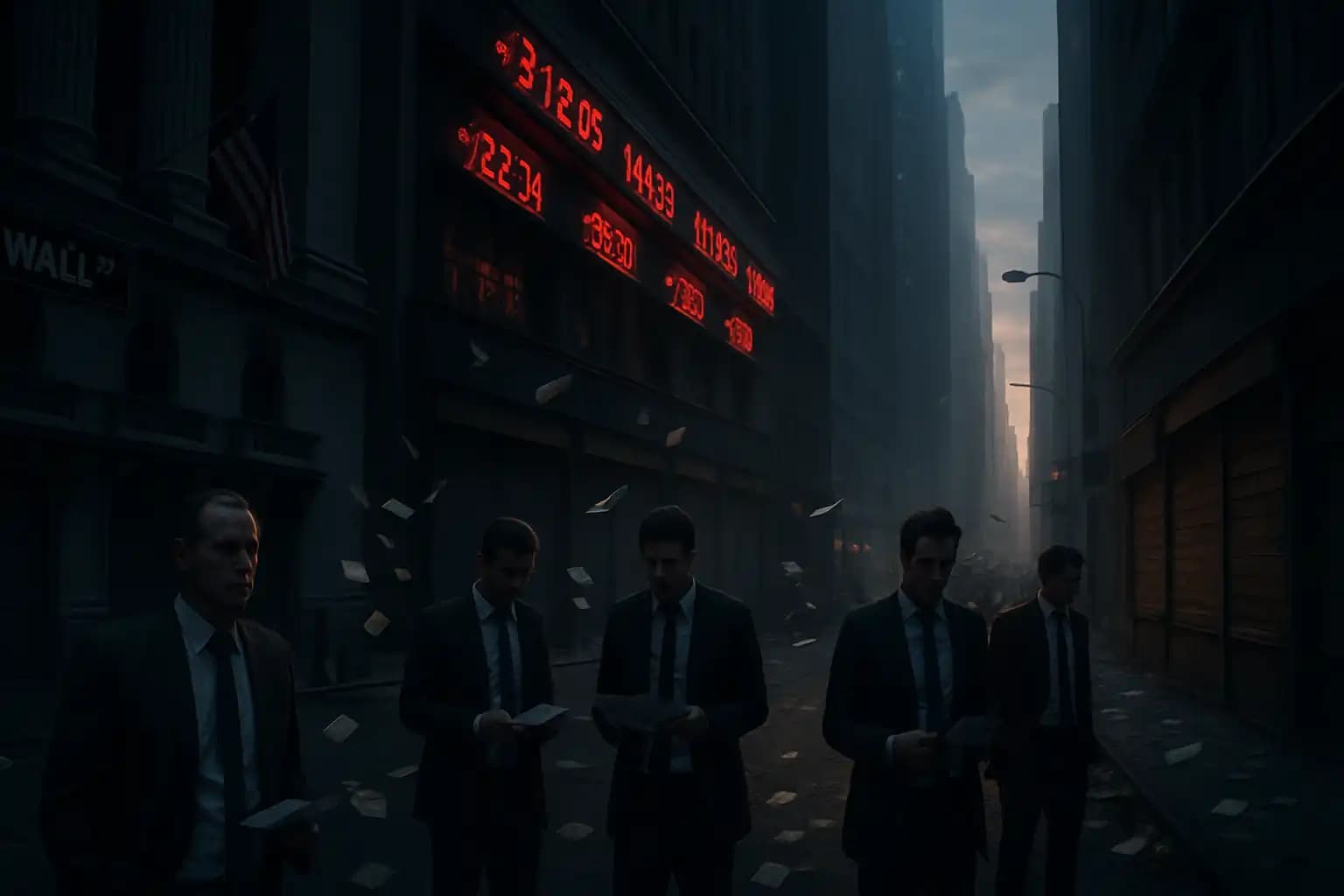Economic doom doesn’t arrive all at once. It creeps in silently, disguised in optimism and dense financial jargon. Bubbles grow as we pretend they won’t burst. Hyperinflation in Weimar Germany, the 2008 subprime crisis, and collapses in emerging markets all tell the same story. Historians agree: the path to ruin is familiar (Discovery Alert).
The Stages of Collapse: Debt, Speculation, and Lost Confidence
Every meltdown—like the Great Depression or Argentina’s 2001 crisis—has surprising consistency. Early warning signs often include soaring debt. Households, corporations, and governments indulge in cheap credit, banking on future gains to surpass present risks. Market imbalances burgeon, and speculative enthusiasm escalates. A few megacaps skew index weights, with over 36% of S&P 500 capitalization concentrated in just ten stocks (Discovery Alert). This instability makes the market fragile, vulnerable to sudden shocks. Conditions resemble those seen in technology-driven systemic risk cases and global chain reactions chronicled in this strategic report.
Bond Market Freeze: The Canary in the Collapse Mine
To spot imminent collapse, monitor liquidity closely. In 2024, U.S. Treasury market liquidity worsened unexpectedly, as investors rushed for cash safety (Brookings). When major players scramble to sell Treasuries—typically regarded as ultra-safe assets—market depth disappears, causing yields to soar. This spike undermines government finances and raises private borrowing costs. Such freezes create feedback loops, with anxious policymakers scrambling to address the issues through rate cuts and special auctions. These moves remind us of strategies employed during the national security sector crises and panicked policy shifts during multifaceted crises.
Lessons from Argentina: The Dangers of Denial and Policy Paralysis
A thorough analysis must include Argentina’s 2001-2002 collapse. Warning signs abounded: fixed exchange rates masking currency risks, mounting debts, reckless spending, and panic-induced bank runs. A Policy Perspectives examination shows how cheap credit and a refusal to address structural issues left Argentina exposed to shocks. The outcome was dire: output dropped by about 20% in three years, the government defaulted, and the peso collapsed. Official denial and slow-motion collapse reflect the policy inertia and wishful thinking apparent in today’s economies—complexity escalates, as detailed in geopolitical threat briefings.
Socioeconomic repercussions such as rising crime and eroding trust echo through historical collapses and investigative analyses, including the historical debunking.
What It Means: Recognizing Collapse Before It’s Too Late
Euphoric rallies and soothing central bank rhetoric often blind us to long-term risks. Triggers vary—a poor policy, global crisis, or black swan event—but the story remains strikingly similar: years of imbalance, sudden liquidity crises, and waves of job losses, bankruptcies, and political turmoil follow. The risks are not solely financial; they can inflict deep societal damage. Social unrest and eroded institutional trust frequently accompany (economic collapse overview). The aftershocks extend beyond GDP figures, impacting the lives and futures of billions, as highlighted in investigative reports and survivalism psychology.
Identifying early crisis signals isn’t about inciting panic; it’s about cultivating resilience, scrutinizing narratives critically, and demanding accountability from experts. For relentless updates and insightful reporting, stay tuned to Unexplained.co.





